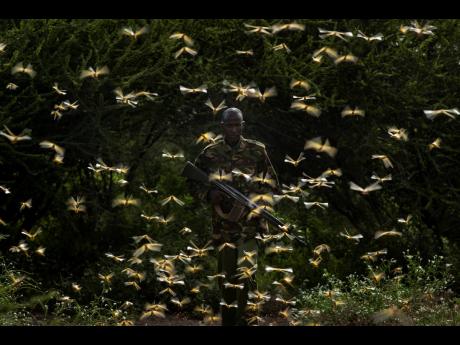Huge locust outbreak in East Africa reaches South Sudan
JUBA (AP):
The worst locust outbreak that parts of East Africa have seen in 70 years has reached South Sudan, a country where roughly half the population already faces hunger after years of civil war, officials announced Tuesday.
Around 2,000 locusts were spotted inside the country, Agriculture Minister Onyoti Adigo told reporters. Authorities will try to control the outbreak, he added.
The locusts have been seen in Eastern Equatoria state near the borders with Ethiopia, Kenya and Uganda. All have been affected by the outbreak that has been influenced by the changing climate in the region.
The situation in those three countries “remains extremely alarming,” the UN Food and Agriculture Organisation (FAO) said in its latest locust watch update Monday. Locusts also have reached Sudan, Eritrea, Tanzania and, more recently, Uganda.
sandy land
The soil in South Sudan’s Eastern Equatoria has a sandy nature that allows the locusts to lay eggs easily, said Meshack Malo, country representative with the FAO.
At this stage, “if we are not able to deal with them ... it will be a problem,” he said.
South Sudan is even less prepared than other countries in the region for a locust outbreak, and its people are arguably more vulnerable. More than five million people are severely food insecure, the UN humanitarian office says in its latest assessment, and some 860,000 children are malnourished.
Five years of civil war shattered South Sudan’s economy, and lingering insecurity since a 2018 peace deal continues to endanger humanitarians trying to distribute aid. Another local aid worker was shot and killed last week, the UN said Tuesday.
The locusts have travelled across the region in swarms the size of major cities. Experts say their only effective control is aerial spraying with pesticides, but UN and local authorities have said more aircraft and pesticides are required. A handful of planes have been active in Kenya and Ethiopia.
The UN has said $76 million is needed immediately. On Tuesday, US Secretary of State Mike Pompeo, during a visit to Ethiopia, said the US would donate another $8 million to the effort. That follows an earlier $800,000.

